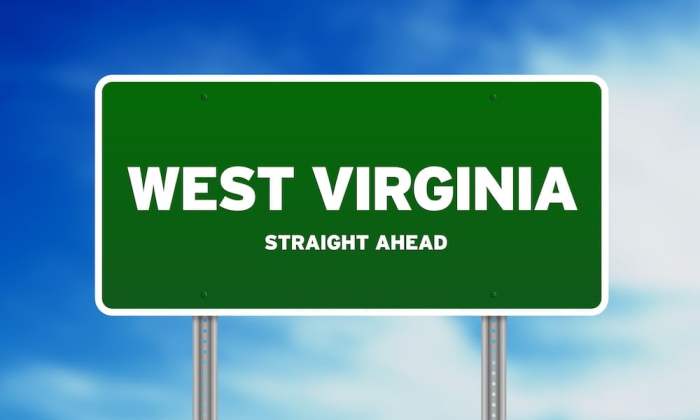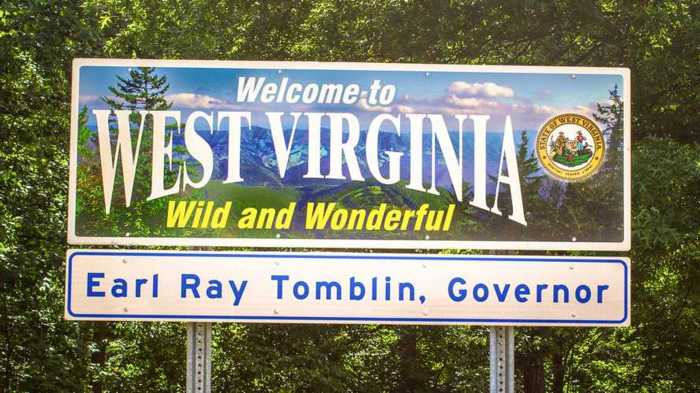Securing the right car insurance in West Virginia is crucial, not just for legal compliance but for financial protection. This guide delves into the intricacies of West Virginia’s car insurance landscape, offering insights into mandatory coverage, cost factors, provider comparisons, and the claims process. Understanding these elements empowers drivers to make informed decisions and safeguard themselves against unforeseen circumstances.
From deciphering minimum liability requirements and exploring the impact of driving history on premiums to navigating the complexities of uninsured/underinsured motorist coverage and SR-22 requirements, we aim to provide a clear and comprehensive overview. We’ll also equip you with the knowledge to compare insurance providers effectively and confidently navigate the claims process should the need arise.
Understanding West Virginia’s Car Insurance Requirements
Driving in West Virginia requires adhering to the state’s mandatory car insurance laws. These laws are designed to protect drivers and other individuals involved in accidents by ensuring financial responsibility for damages and injuries. Understanding these requirements is crucial to avoid legal penalties and financial burdens.
West Virginia’s Minimum Car Insurance Coverage
West Virginia mandates minimum liability insurance coverage for all drivers. This means you must carry a specific minimum amount of insurance to cover potential damages caused to others in an accident. Failing to do so can result in significant consequences. The minimum liability coverage includes bodily injury and property damage. Specifically, the minimum liability limits are $25,000 for bodily injury to one person, $50,000 for bodily injury to multiple people in a single accident, and $25,000 for property damage. This means that if you cause an accident resulting in injuries exceeding these limits, you are personally liable for the remaining costs.
Penalties for Driving Without Insurance in West Virginia
Driving without the required minimum insurance in West Virginia is a serious offense. Penalties can be substantial and include significant fines, license suspension, and even jail time depending on the circumstances and any prior offenses. Furthermore, your vehicle may be impounded until proof of insurance is provided. The exact penalties can vary based on the specifics of the violation, but the potential consequences make carrying adequate insurance a critical necessity. In addition to legal penalties, driving uninsured leaves you personally responsible for all costs associated with any accident you may cause, which can quickly lead to significant financial hardship.
Types of Car Insurance Coverage in West Virginia
Understanding the different types of car insurance coverage available is important in choosing a policy that best suits your individual needs and risk tolerance. While West Virginia mandates minimum liability coverage, drivers can and often should purchase additional coverage for enhanced protection.
| Coverage Type | Description | Benefits | Cost Considerations |
|---|---|---|---|
| Liability | Covers injuries and damages to others caused by you in an accident. | Protects you from financial ruin due to lawsuits. | Minimum limits are mandated; higher limits offer greater protection. |
| Uninsured/Underinsured Motorist | Covers injuries and damages caused by an uninsured or underinsured driver. | Protects you if you’re involved in an accident with a driver lacking sufficient insurance. | Adds to the cost but provides crucial protection. |
| Collision | Covers damages to your vehicle regardless of fault. | Repairs or replaces your car after an accident, even if you’re at fault. | Can be expensive but essential for newer vehicles. |
| Comprehensive | Covers damages to your vehicle from non-collision events (e.g., theft, vandalism, weather). | Protects against a wide range of risks beyond accidents. | Generally less expensive than collision coverage. |
Understanding West Virginia’s Uninsured/Underinsured Motorist Coverage

West Virginia law requires drivers to carry a minimum amount of liability insurance, but accidents involving uninsured or underinsured drivers are unfortunately common. This makes uninsured/underinsured motorist (UM/UIM) coverage a crucial part of a comprehensive insurance policy in the state. Understanding this coverage can significantly protect you and your passengers in the event of a serious accident.
UM/UIM coverage protects you and your passengers from financial losses resulting from an accident caused by a driver without adequate insurance or no insurance at all. It compensates for medical bills, lost wages, pain and suffering, and property damage. In essence, it acts as a safety net, stepping in where the at-fault driver’s insurance falls short.
Benefits of Uninsured/Underinsured Motorist Coverage
UM/UIM coverage is particularly beneficial in scenarios where the at-fault driver is uninsured or their liability coverage is insufficient to cover your losses. For example, if you’re severely injured in an accident caused by an uninsured driver, your medical bills could easily exceed tens of thousands of dollars. UM/UIM coverage would help cover these costs, along with other expenses like lost wages and pain and suffering. Similarly, if you’re involved in an accident with an underinsured driver whose liability limit is lower than your medical expenses and property damage, UM/UIM coverage would bridge the gap.
Filing a Claim Under Uninsured/Underinsured Motorist Coverage
The process of filing a claim under UM/UIM coverage typically begins by reporting the accident to your insurance company as soon as possible. You will need to provide details about the accident, including the date, time, location, and the other driver’s information (if available). You’ll also need to provide documentation such as police reports, medical bills, and repair estimates. Your insurance company will then investigate the accident and determine the extent of your coverage. They will handle negotiations with the other driver’s insurance company (if applicable) and may offer a settlement. If you are dissatisfied with the settlement offered, you may have the option to pursue legal action.
Crucial Situations Requiring Uninsured/Underinsured Motorist Coverage
Consider this scenario: A driver without insurance runs a red light and causes a serious accident, leaving you with significant injuries and substantial medical bills. Without UM/UIM coverage, you would be responsible for all of these costs. Or imagine a situation where you are involved in a collision with a driver whose liability insurance is only $25,000, but your medical bills alone exceed $50,000. Your UM/UIM coverage would step in to cover the remaining $25,000. These are just two examples illustrating the critical role UM/UIM coverage plays in protecting you financially in the face of accidents involving uninsured or underinsured drivers.
Navigating the Claims Process in West Virginia
Filing a car insurance claim in West Virginia can seem daunting, but understanding the process can make it significantly smoother. This section Artikels the steps involved, the role of the adjuster, necessary documentation, and what to expect during settlement. Remember, prompt action and clear communication are key to a successful claim.
Filing a Car Insurance Claim
After a car accident in West Virginia, promptly report the incident to your insurance company. This usually involves a phone call to their claims department. You will be given a claim number and assigned a claims adjuster. Be prepared to provide details of the accident, including the date, time, location, and parties involved. Accurate and thorough reporting is crucial for a swift resolution. Failing to report the accident promptly could jeopardize your claim.
The Role of the Insurance Adjuster
The insurance adjuster is a crucial figure in the claims process. Their role is to investigate the accident, assess the damages, and determine the extent of the insurance company’s liability. They will gather information from all parties involved, review police reports (if available), and possibly inspect the damaged vehicles. The adjuster’s assessment forms the basis of the settlement offer. Open communication and cooperation with your adjuster are vital. Remember, their job is to assess the claim fairly, not to minimize your payout. Disagreements can be resolved through negotiation or, if necessary, legal channels.
Gathering Necessary Documentation
Compiling the necessary documentation is essential for a smooth claims process. This typically includes: a copy of your insurance policy, a completed accident report (including police report if one was filed), photographs of the damage to all vehicles involved, medical records documenting injuries, repair estimates from qualified mechanics, and contact information for all witnesses. The more comprehensive your documentation, the stronger your claim. Missing key information can significantly delay the settlement process. For example, lacking medical records can delay compensation for medical expenses.
The Settlement Process
Once the adjuster has gathered all necessary information, they will evaluate the claim and make a settlement offer. This offer may cover vehicle repairs, medical expenses, lost wages, and other related costs. You are not obligated to accept the first offer. If you disagree with the amount offered, you have the right to negotiate. Negotiation might involve providing additional documentation or explaining any discrepancies. If negotiation fails, you may consider seeking legal counsel to protect your interests. The entire process can take several weeks or even months depending on the complexity of the claim and the cooperation of all involved parties. Maintaining thorough records and documenting all communication with the adjuster is recommended throughout the process.
Illustrative Example: A West Virginia Driver’s Insurance Situation

Let’s consider the case of Sarah, a West Virginia resident, who was involved in a car accident while driving her 2018 Honda Civic. She was stopped at a red light when another car, driven by Mr. Jones, rear-ended her. The impact caused significant damage to the rear of Sarah’s vehicle.
Sarah carries a minimum liability insurance policy in West Virginia, as required by law, which includes bodily injury liability coverage of $25,000 per person and $50,000 per accident, and property damage liability coverage of $25,000. She also has collision and comprehensive coverage on her policy. Mr. Jones was at fault for the accident, as police reports confirmed.
Sarah’s Claims Process
Following the accident, Sarah contacted her insurance company, reporting the incident and providing details of the accident, including the police report number and Mr. Jones’ insurance information. Her insurer then initiated the claims process. They contacted Mr. Jones’ insurance company to begin negotiations. Sarah’s insurer also arranged for her vehicle to be towed to a repair shop for assessment and repairs.
Vehicle Damage and Repair
The repair shop assessed the damage to Sarah’s Honda Civic and provided a detailed estimate of the repair costs. The estimate totaled $4,500. Sarah’s collision coverage covered the cost of repairs, minus her deductible of $500. Therefore, her insurance company paid $4,000 directly to the repair shop.
Medical Expenses and Bodily Injury
Fortunately, Sarah only sustained minor whiplash. She sought medical attention at an urgent care facility, incurring medical expenses of $800. Since her medical bills were relatively low, she chose to use her health insurance to cover the majority of these costs, leaving only a small out-of-pocket expense. There were no other injuries to report.
Financial Implications
Sarah’s total out-of-pocket expenses consisted of her $500 collision deductible and a small co-pay for her medical treatment, totaling approximately $550. Her insurance company handled the rest of the expenses related to the accident, minimizing her financial burden. Mr. Jones’ insurance company was responsible for paying for the damages to Sarah’s car, however the negotiation process was handled entirely by the insurance companies.
Resolution of the Situation
Sarah actively cooperated with her insurance company throughout the claims process, promptly providing all necessary documentation and information. The claim was settled within a reasonable timeframe, with all expenses covered by insurance as per the policy agreement. This case demonstrates the importance of having adequate car insurance coverage in West Virginia, particularly collision and comprehensive coverage, to mitigate financial risks associated with accidents.
Last Point

Ultimately, securing adequate car insurance in West Virginia is a multifaceted process requiring careful consideration of various factors. By understanding the state’s regulations, evaluating your individual needs, and comparing available options, you can find a policy that provides the necessary protection at a competitive price. Remember, proactive planning and informed decision-making are key to ensuring your financial security on the road.
Essential FAQs
What happens if I’m involved in an accident and the other driver is uninsured?
Uninsured/underinsured motorist coverage protects you in such situations. It covers medical bills, property damage, and other losses caused by an uninsured or underinsured driver.
How often can I expect my car insurance rates to change?
Rates can change annually, or even more frequently depending on your driving record, claims history, and changes in risk assessment by the insurance company. It’s advisable to review your policy regularly.
Can I get car insurance if I have a poor driving record?
Yes, but it will likely be more expensive. Companies offering high-risk insurance specialize in this area, though you may pay significantly higher premiums.
What documents do I need to provide when filing a claim?
Typically, you’ll need police reports, photos of the damage, medical records (if applicable), and contact information for all parties involved.